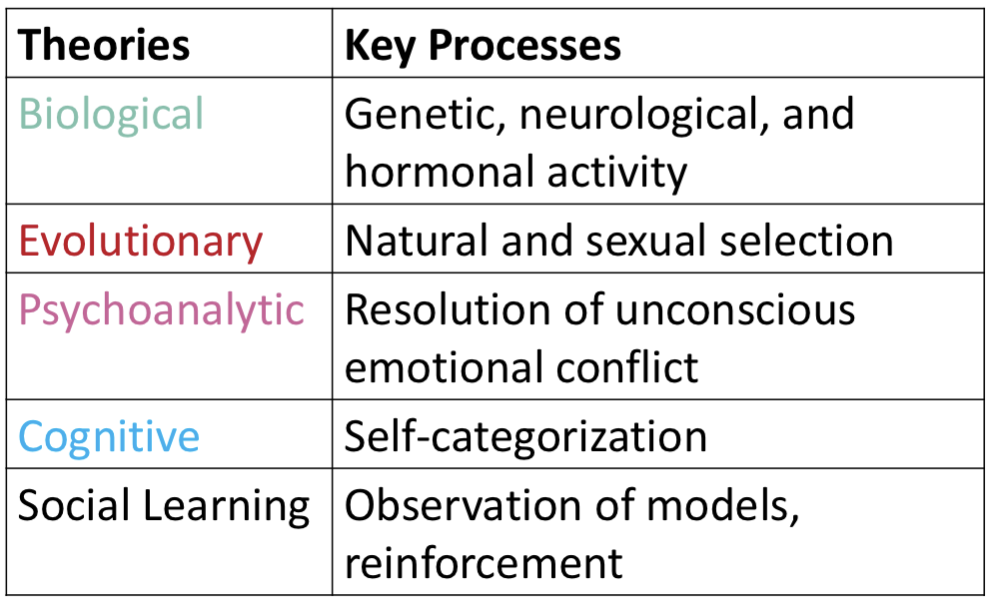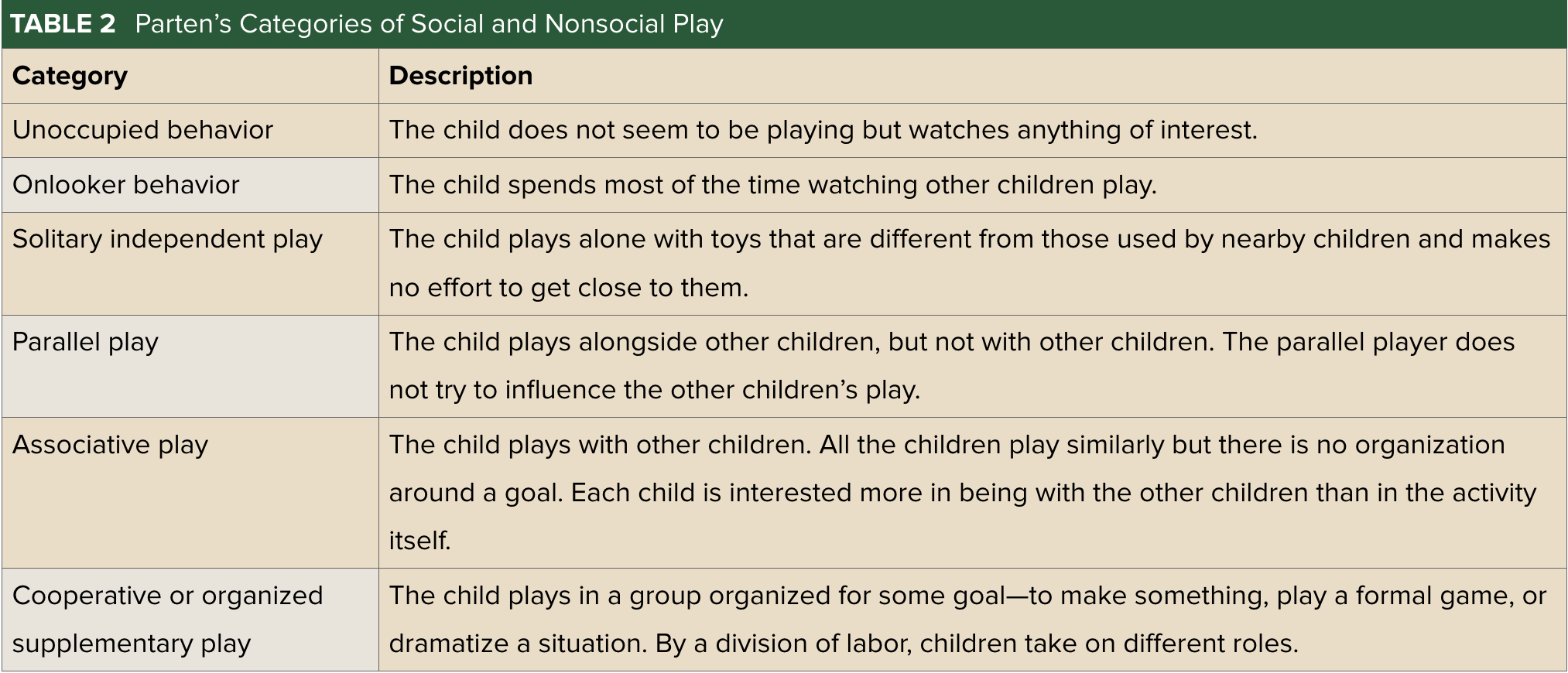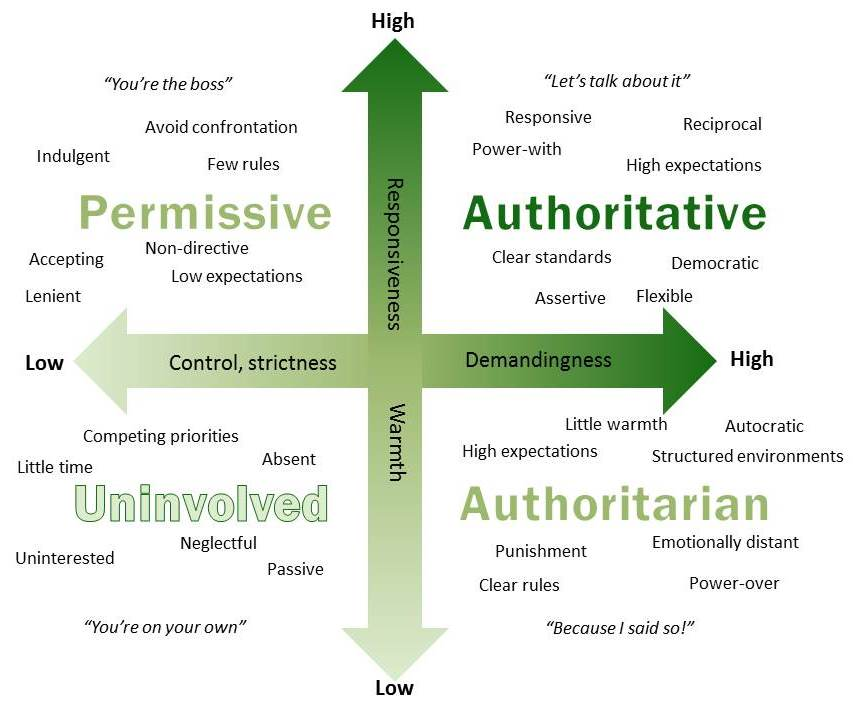Chapter 8: Psychosocial Development in Early Childhood
1/32
Earn XP
Description and Tags
Discuss emotional and personality development in early childhood, discuss gender development in early childhood, describe play in early childhood, explain how parenting practices influence development, evaluate young children's relationships with siblings and peers.
Name | Mastery | Learn | Test | Matching | Spaced |
|---|
No study sessions yet.
33 Terms
The Developing Self
Self concept is the sense of self. A child cannot differentiate between the real self (who they actually are) and their ideal self (who they want to be). Improves by age 6.
Self-Esteem
The evaluative part of the self-concept. Tends to be stable, not firmly based in reality, and unidimensional. Contingent self-esteem refers to self-evaluations based on success, which can lead to learned helplessness. Factors outside of self lead them to try harder, persevere through challenges, and tend to have parents who praise their efforts. Brown vs Board of Education
Understanding and Regulating Emotions
This is the ability to comprehend and manage one's feelings for healthy child development. Emotional self-regulation guides behavior and social interactions. Children recognize basic emotions by 5 years and self-conscious emotions (guilt, shame, pride) by 4 years. This aligns with Erikson's Initiative vs. Guilt stage (3-6 years), where successful assertion of control leads to initiative, while stifled impulses can cause guilt.
Perspectives on gender development. How different are young boys and girls, and why do children develop gender identity, and how does it affect them?
This topic examines various concepts related to how gender is understood and expressed. Key terms include:
Gender roles: These refer to the specific behaviors, attitudes, and traits that a culture largely considers appropriate for individuals based on their assigned gender.
Gender-typing: This is the developmental process through which children learn, acquire, and internalize the specific gender roles that are expected of them by their culture.
Gender stereotypes: These are oversimplified, preconceived, and often rigid generalizations about the characteristics, behaviors, or abilities of males and females. They often do not reflect individual realities and can lead to bias.
Gender differences: These are actual observed psychological or behavioral distinctions that tend to exist between males and females, often based on statistical averages. For example, girls typically regulate emotions more effectively, especially before age 33, while boys commonly exhibit higher activity levels and a greater tendency for physical aggression.
Five Perspectives on Gender Development
Biological, evolutionary, psychoanalytic, cognitive, social learning. What are each of their key processes?

Biological Gender Approach
John Money’s work, many cultures have similar gener roles, suggesting a biological influence. Gender reassignment often fails, indicating it is not easily changed and has a biological basis. The recent issue of transgender children highlights how it is biologically influenced. This does not exclude the enviornment from influencing gender.
Evolutionary Gender Approach
Thoery of sexual selection (Darwin) suggests that gender differences in behavior and psychology are rooted in evolutionary adaptation. It posits that certain traits have been favored in the context of reproduction and survival, leading to inherent male and female roles.
Psychoanalytic Approach (Freud)
Identification occurs when a child adopts beleifs and behaviors of the same sex parents/ Occurs when the child gives up the wish to possess the parent of the opposite sex. Most psychologists do not agrtee that gender typing must precede gender constancy.
3 Cognitive Approaches to Gender Roles
Cognitive-developmental theory
Gender-schema theory
Social learning theory
Lawrence Kohlberg’s Theory
Gender roles hinge on a three stage process of gender constancy, which is a childs realization that their gender will always be the same. 1. Gender identity 2. Gender stability 3. Gender consistency (outward appearance doesnt’ affect gender)
Sandra Bem’s Gender Theory
Children socialize themselves into their gender role by organizing information about who they are, based on the XX and XY influences from their culture. Stereotypical behavior is a result of gender conformity. They socialize themselves into it. Even though there is a gender assignment, there is a cultural influence and personal experiences that shape their understanding of gender roles.
Social Learning Theory
Traditional social learning theory predicts kids imitate models and are rewarded for gender-appropriate behavior. Contemporary social cognitive theory incorporates socialization. Children are not passive; they learn by selecting or creating their own environments through choosing playmates and activities.
Social influences on gender development
There are 3 major social influences on gender development: family, peers, and culture. In families, parents adhering to traditional gender schemas tend to have strongly gender-typed children. Children who play in same-sex groups or by themselves also tend to be more gender-typed. Cultural transmission of roles occurs through TV, books, and other media.
Research in action: Adaptive value of play
Evolutionary psych assumes play has several functions. Play is not a waste, but time well spent.
Exercise play develops muscle strength, endurance, coordination
Object play develops tool use and learning motor skills
Social play is an opportunity to learn and practice societal norms.
Types of Play
Functional, constructive play, dramatic play, and games with rules.
Functional Play
Involves simple, repetitive motor movements with or without objects. It is characteristic of infants and toddlers and helps them explore their environment and develop gross and fine motor skills. Examples include rolling a ball, pushing a toy car back and forth, or running and jumping. Ruled out of K-12 in america.
Constructive Play
More advanced than functional play, constructive play involves creating or building something using objects. Children engage in this when they use materials to construct or make something. This type of play fosters problem-solving skills, creativity, and fine motor development. Examples include building towers with blocks, drawing pictures, making a sandcastle, or assembling a puzzle.
Dramatic Play
Also known as pretend play or imaginative play, involves a child taking on a role and acting out scenarios, often mimicking real-life situations or fantasy. It fosters social skills, emotional expression, language development, and creativity. Examples include playing 'house,' 'doctor,' 'teacher,' or re-enacting scenes from stories.
Games with Rules
More organized form of play that involves adherence to predefined rules and often has a clear goal or outcome. It typically emerges in later childhood and helps children develop social skills such as cooperation, negotiation, turn-taking, and competition, as well as cognitive skills like strategic thinking. Examples include board games, sports like soccer or tag, or card games.
Mildred Parten’s Social Dimensions of Play
A framework introduced by social researcher Mildred Parten that categorizes children's play into different types based on the level of social interaction involved. Unoccupied, onlooker, solitary, parallel, associate play, operant and organized play (least to most social).

Influences on Play
Play is influenced by several factors, including:
Gender Segregation: Children often tend to select playmates of their own gender.
Toy Preferences: When preschool girls and boys do play together, they frequently engage with toys traditionally associated with masculine roles, such as cars or trains.
Cultural Values: Different cultures emphasize varying traits in play. Western cultures, for example, tend to value independence and initiative, while collectivistic cultures often prioritize self-control and group harmony.
Define Discipline as it relates to parental guidance.
Discipline refers to the methods used to mold a child's character, teach self-control, and encourage appropriate behavior.
What are the common Strategies of Discipline used by parents?
Parental discipline often employs several strategies:
Inductive Techniques: These strategies aim to promote desirable behavior by engaging a child's reasoning and sense of fairness. Parents explain the consequences of actions, both for the child and others, helping the child understand why certain behaviors are right or wrong and fostering empathy. This approach encourages internal moral development.
Power Assertion: This method discourages undesirable behavior through the assertive enforcement of parental control. It can involve physical punishments (e.g., spanking), verbal threats, commanding, or removing privileges, focusing on external control and obedience to authority.
Withdrawal of Love: This technique involves a parent's temporary expression of disapproval, such as ignoring the child, isolating them (like a 'time-out'), or verbally expressing dislike for the child's behavior. The goal is to make the child feel that parental affection is contingent on their behavior, which can be emotionally impactful.
Diana Baumrind’s Parenting Styles
There are four parenting styles that differ in terms of warmth and control; Authoritarian parenting emphasizes control and obedience with little warmth; Permissive parenting is warm, makes few demands, and rarely involves punishing; Authoritative parenting is loving, yet demands good behavior based on firm standards; Neglectful parents focus on their needs and not the child’s needs.
Critique of Baumrind’s Model
The benefits of authoritative parenting are
repeatedly supported by research.
The model suggests there is one “right” way to raise children, reflecting a North American view. Among Asian Americans, obedience and strictness are not necessarily associated with harshness but instead with caring and concern. Kids tend to be self-reliant and independent.

Special behavior Concerns
Three issues of extra concern to parents, caregivers, and teachers of preschool children are how to:
• Promote helping behavior
• Curb aggression
• Deal with fears
Helping Others
Altruism is behavior intended to help others out
of inner concern and without expectation of
external rewards.
Altruism is one type of prosocial behavior, which
is any voluntary behavior intended to help
others for a variety of reasons.
Genetics, parental involvement, cultures with
extended family groups, relationships with
others, and popular media all influence the
development of prosocial behavior.
Types of Aggression
Instrumental aggression is used to reach a goal, such as hitting to obtain a desired toy.
Overt aggression is openly directed at its target and employed more often by boys.
Relational aggression is used more often by girls and is subtle, damaging another person’s relationships and reputation.
Influences on aggression
Temperament and genetics
parental behaviors
Stressful or unstimulating home environments
Witnessing violence
cultural differences
Aggression is a learned behavior.
Coping with fears (3-6 years old)
Passing fears are common in early childhood. Two- to 4-year-olds are often afraid of animals. By 6, children are more likely afraid of the dark. Other common fears include thunderstorms, doctors, and imaginary creatures. Fears dissipate as children better distinguish reality and fantasy.
Sibling Relationships
The earliest and most frequent disputes are with siblings over property rights.
Sibling disputes and settlements are socialization opportunities; children stand up for their principles and negotiate disagreements. Sibling rivalry is not the main pattern of behavior. Affection, interest, companionship, and influence are prevalent in sibling relationships. Prosocial and play-oriented behaviors are more common than rivalry.
Only Children
In the United States, approximately 18% of children under age 18 are only children. Research shows that “onlies” are not selfish, lonely, or spoiled. They perform slightly better than children with siblings at school and work. Perhaps this is due to parents giving more attention to—and expecting more from—only children.
Friendship
At about 3, children begin to have friends. Friends tend to be the same age and sex. Preschoolers prefer friends that:
• Do things together
• Like and care for each other
• Share and help each other